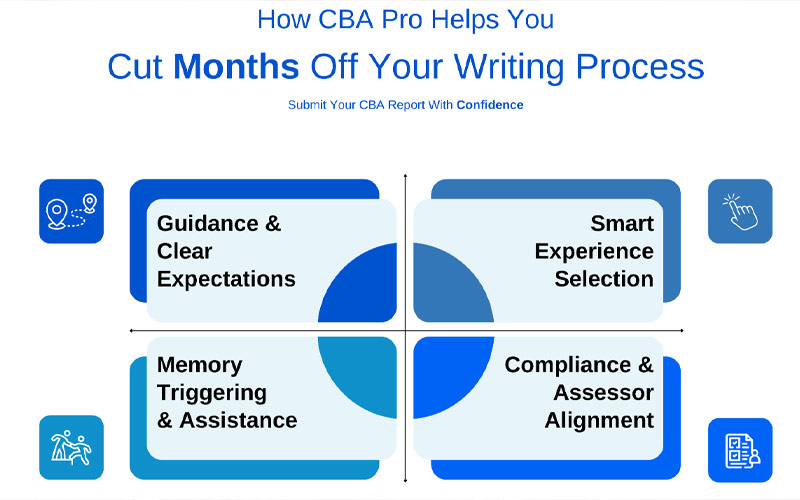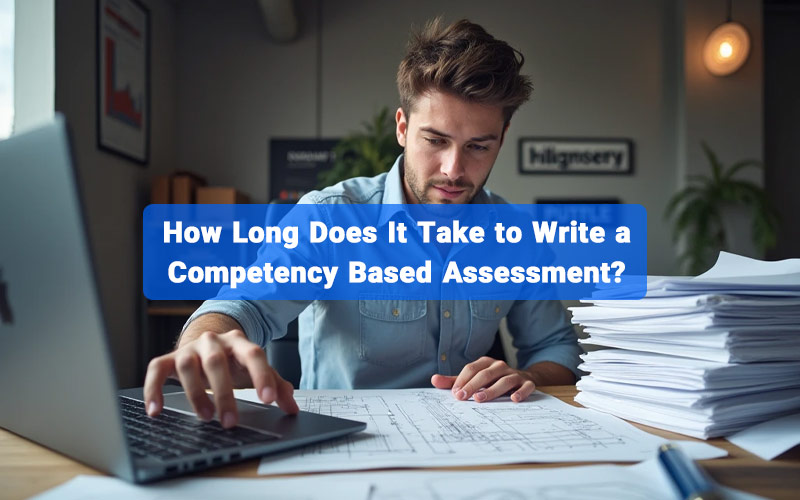Writing a Competency Based Assessment (CBA) can be an intensive process, particularly for engineering professionals juggling full-time jobs and personal commitments. Based on interviews with 52 PEng applicants across Canada up until March 12, 2025, we found that it typically takes 3 to 6 hours of focused effort to complete just one competency. This figure includes reviewing the competency requirements, identifying the most relevant experience from your background, and multiple rounds of writing and revising for accuracy.
If you can only dedicate around 2–3 hours a day to your CBA, the total timeline may stretch to over 2 months. Many applicants find that gathering details from past work records, emails, or LinkedIn profiles can be surprisingly time-consuming. However, by organizing your documentation and drafting a structured plan early on, you can save a substantial amount of time and reduce the chances of multiple rewrites.
Moreover, the pressure to ensure compliance with provincial regulatory standards can sometimes delay progress. Applicants often become uncertain about whether their examples align with specific indicators or if their write-up satisfies the requirements of technical depth, professional judgment, and ethical practice. The good news is that with the right strategies—and the right tools—you can speed up the process without compromising quality.
Overview of the CBA
A Competency-Based Assessment is a structured method used by Canadian engineering associations like PEO, APEGA, APEGS, EGBC, and EGM to evaluate whether applicants possess the required technical and professional competencies for licensure. Rather than merely listing job titles or tasks, CBAs demand detailed stories demonstrating problem-solving, leadership, and ethical judgment in real-world scenarios.
A CBA ensures that each candidate meets a standardized benchmark for engineering competence. Whether you have a decade of experience or are just starting, the focus is on how and why you performed certain tasks, not merely that you performed them. This method makes the licensure process more transparent and fair, as assessors compare submissions against predetermined indicators.
A thorough CBA reduces the need for clarifications or resubmissions, thus speeding up the overall review process. Detailed accounts, well-organized evidence, and a clear narrative can all help assessors quickly identify whether your experience meets the required depth and breadth. Consult your provincial association’s guidelines to ensure your submission hits the right targets.
Factors That Affect the Time It Takes to Write a CBA
Understanding the CBA Requirements
- Pain Point: “I don’t know what CBA wants from me.”
- Explanation: Each provincial association frames competencies in categories such as Technical Competence, Project Management, Professional Accountability, etc. Applicants often find it daunting to figure out which details to include or how much depth to go into. This uncertainty leads to multiple drafts and extended timelines.
- How CBA Pro Solves It:
- Explains What You Need To Provide: Offers a step-by-step overview of each competency and indicators in CBA.
- Guides with Q&A for Precise Details: The software prompts you with questions that directly correlate to assessor expectations.
- Gives You a Clear Workflow: Visual aids and checkpoints help you keep track of your progress and ensure nothing is missed.
Determining Which Work Experience To Write About
Category: Smart Experience Selection
- Pain Point: “I don’t know which work experience example to choose.”
- Explanation: Your background might span multiple projects, internships, or roles. Sorting through all these to find the most suitable examples can be time-consuming. Applicants often waste hours second-guessing which experiences best showcase each competency.
- How CBA Pro Solves It
- Finds the Best Matches from Your CV: Uses AI-driven matching to suggest which projects align with specific competencies.
- Identifies Missing Details to Improve: Flags gaps in your examples so you can fill them in proactively.
- Suggests What to Look For: Provides tips on focusing on outcomes, complexities, and your personal contribution.
Remembering and Articulating the Work Experience Details
Category: Compliance & Assessor Alignment
- Pain Point: “I’m not sure if my writeups meet the assessor’s expectations.”
- Explanation: It’s easy to downplay critical details or overlook something that might be exactly what an assessor needs to see. Many applicants find themselves revisiting old reports, sifting through emails, or rummaging through archived files to retrieve the specifics.
- How CBA Pro Solves It
- Approved CBA Examples for Clarity: Real-world examples that have been approved by the associations to guide your storytelling and ensure you match the style assessors expect.
- Asks Tailored Questions to Jog Memory: Interactive interview-style questions that are based on the gaps from your CV to help you recall key technical details, decisions made, and the impact of your work.
- Structures Action, Situation, Outcome: Once you provide sufficient details, CBA Pro AI Assistant will structure your inputs into the CBA framework.
Lack of Confidence in Compliance with Association’s Expectations
Even if you’ve carefully documented your experience, each association (PEO, APEGA, APEGS, EGBC, EGM) might have slightly varying criteria. Ensuring that your competencies align with the right indicators requires diligent review. This uncertainty adds to the overall time to completion since you may need extra peer reviews or professional advice.

How to Estimate the Time for Writing a CBA?
Breakdown of Tasks:
Research: Reviewing official guidelines to understand (30-60 minutes per competency).
Drafting: Writing initial narratives (1.5–3 hours per competency).
Revising: Editing for clarity, conciseness, and compliance (1-2 hours per competency).
Real-World Pacing
Most applicants devote 2–3 hours daily to writing or editing, leading to a timeline of at least 2 months. If your experience is well-organized beforehand, you might reduce that by several weeks.
Personal Schedule
People with demanding jobs or family commitments often find it challenging to spend uninterrupted time on their CBA. Use a project management tool or a simple calendar blocking method—schedule each competency as a mini project to track progress and maintain motivation.
How Long Does It Take to Write a CBA with CBA Pro?
Case studies from over 80 applicants who have used CBA Pro reveal an 83% reduction in the time spent, bringing the 3–6 hours per competency down to just 10–30 minutes in some cases. Here’s why:
Automated Insights and Checklists: CBA Pro uses smart algorithms to match your work experiences with the relevant competency indicators, cutting down on manual sorting. Built-in prompts ensure you address each required detail, so you aren’t left guessing.
Guided Workflows: Instead of navigating multiple documents or websites, you have a centralized interface with step-by-step prompts. These prompts highlight the exact information assessors look for, significantly reducing the need for rewrites.
Testimonials
“CBA Pro turned a week’s worth of writing into a weekend task! I knew exactly which examples to include, and I finished my entire CBA in half the time.” – Vanessa, E.I.T.
“Before using CBA Pro, I spent hours rummaging through files. Now I get tailored prompts and can complete each competency within 30 minutes.” – Ahmed, E.I.T.
Many users describe the software as a “virtual mentor,” guiding them through the process with clarity. An infographic on our homepage illustrates this rapid completion graphically, comparing traditional CBA writing (multiple hours or days per competency) vs. CBA Pro approach (minutes per competency).

Conclusion
In a traditional setting, writing a Competency-Based Assessment can take 2 months or more, factoring in personal obligations, the complexity of each competency, and the careful alignment with provincial guidelines. By breaking the process into clear steps—understanding requirements, selecting the right experiences, and articulating them effectively—you can maintain momentum and avoid the common pitfalls of wasted effort.
For those seeking a streamlined approach, tools like CBA Pro can drastically reduce the time spent per competency, enhance clarity, and boost your confidence in meeting the Professional Engineer expectations across Canada. Remember, the path to successful licensure doesn’t have to be overwhelmingly long or confusing—proper guidance and the right methodology can make all the difference.


